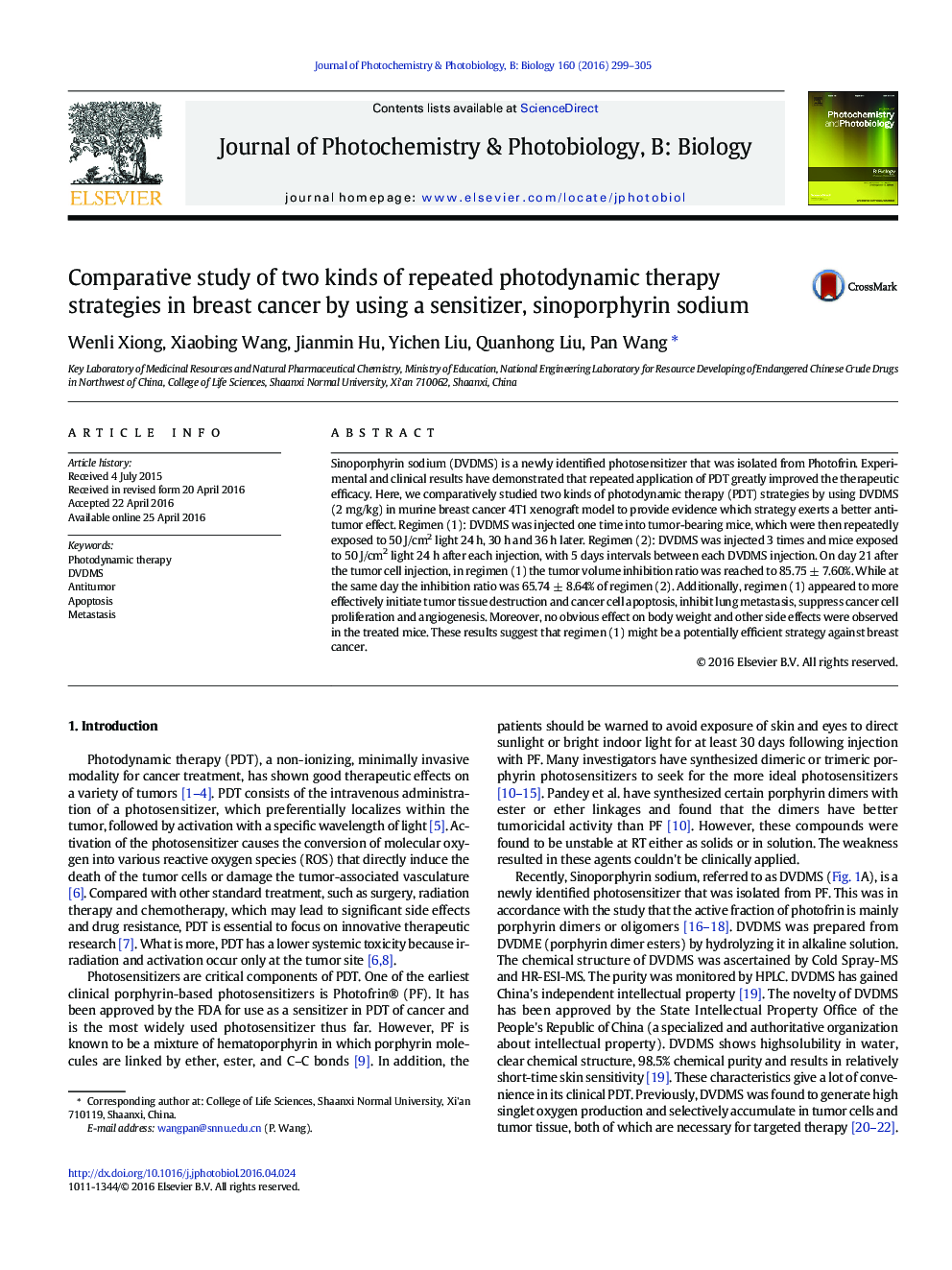| Article ID | Journal | Published Year | Pages | File Type |
|---|---|---|---|---|
| 29592 | Journal of Photochemistry and Photobiology B: Biology | 2016 | 7 Pages |
•Different repeated PDT strategies were comparatively studied in 4T1 xenograft model.•DVDMS × 1 & light × 3 produced better anti-tumor effect than DVDMS & light × 3.•Anti-breast tumor effects of DVDMS combined with repeated PDT was first assessed.
Sinoporphyrin sodium (DVDMS) is a newly identified photosensitizer that was isolated from Photofrin. Experimental and clinical results have demonstrated that repeated application of PDT greatly improved the therapeutic efficacy. Here, we comparatively studied two kinds of photodynamic therapy (PDT) strategies by using DVDMS (2 mg/kg) in murine breast cancer 4T1 xenograft model to provide evidence which strategy exerts a better antitumor effect. Regimen (1): DVDMS was injected one time into tumor-bearing mice, which were then repeatedly exposed to 50 J/cm2 light 24 h, 30 h and 36 h later. Regimen (2): DVDMS was injected 3 times and mice exposed to 50 J/cm2 light 24 h after each injection, with 5 days intervals between each DVDMS injection. On day 21 after the tumor cell injection, in regimen (1) the tumor volume inhibition ratio was reached to 85.75 ± 7.60%. While at the same day the inhibition ratio was 65.74 ± 8.64% of regimen (2). Additionally, regimen (1) appeared to more effectively initiate tumor tissue destruction and cancer cell apoptosis, inhibit lung metastasis, suppress cancer cell proliferation and angiogenesis. Moreover, no obvious effect on body weight and other side effects were observed in the treated mice. These results suggest that regimen (1) might be a potentially efficient strategy against breast cancer.
